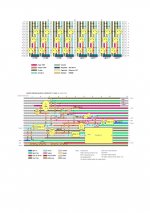Reply to Ian and Ruwe
Hi Ian and Ruwe,
I have read both your comments and for the most part agree with everything you say. It was not initially my intention to include all of the other preamplifiers however, after listening to them all I felt it would be wrong to only write a review using only one preamplifier. I believe it is important to show how much difference the preamplifier was making so that people would understand it is worth experimenting with different preamplifiers.
One thing I should correct myself on is the comment I made about how close the clone could be on some music by saying it was amazingly close to the proper Naim Nap 140. I am sorry but my enthusiasm got the better of me and while the clone was much better using the Naim Nac 42 preamplifier than it was using the clone preamplifiers it still isn’t a Naim.
What caught me was how much better it was using the Naim preamplifier than it had been using the clone preamplifiers. After Ian’s comments I spent the day swapping the two power amplifiers over and over. What was quickly established was how much better the Naim amplifier was on all types of music while the clone really only excelled on the simpler pieces of music. Don’t get me wrong the clone power amplifier is very good and, in its price, range would be a clear winner.
As for changing components to bring the clone closer to the Naim it is something I will do but I read a comment on this thread a couple of times, “get a working amplifier before trying any modifications”. What will I do first – I am not sure but the answers are in the text of this thread and I will endeavour to formulate a logical step by step update of the clone and where possible after each update do listening tests to further evaluate the clone? To make sure I do not cloud the issue I will only use the Naim Nac 42 preamplifier.
Hi Ian and Ruwe,
I have read both your comments and for the most part agree with everything you say. It was not initially my intention to include all of the other preamplifiers however, after listening to them all I felt it would be wrong to only write a review using only one preamplifier. I believe it is important to show how much difference the preamplifier was making so that people would understand it is worth experimenting with different preamplifiers.
One thing I should correct myself on is the comment I made about how close the clone could be on some music by saying it was amazingly close to the proper Naim Nap 140. I am sorry but my enthusiasm got the better of me and while the clone was much better using the Naim Nac 42 preamplifier than it was using the clone preamplifiers it still isn’t a Naim.
What caught me was how much better it was using the Naim preamplifier than it had been using the clone preamplifiers. After Ian’s comments I spent the day swapping the two power amplifiers over and over. What was quickly established was how much better the Naim amplifier was on all types of music while the clone really only excelled on the simpler pieces of music. Don’t get me wrong the clone power amplifier is very good and, in its price, range would be a clear winner.
As for changing components to bring the clone closer to the Naim it is something I will do but I read a comment on this thread a couple of times, “get a working amplifier before trying any modifications”. What will I do first – I am not sure but the answers are in the text of this thread and I will endeavour to formulate a logical step by step update of the clone and where possible after each update do listening tests to further evaluate the clone? To make sure I do not cloud the issue I will only use the Naim Nac 42 preamplifier.
The Naim Nac 42 has been extensively modified to "ultimate Avondale" specification - it makes a world of difference. The two pictures show the preamplifier layout and components used, the circuit is 'mirrored' which as well as looking neat is said to offer sonic advantages. The pre-amp has discrete regulators which require 30V so the SNAPS power supply has been modified to provides this. The source and speakers used is in the original text.
Last edited by a moderator:
+1Hi Ian and Ruwe,
I have read both your comments and for the most part agree with everything you say. It was not initially my intention to include all of the other preamplifiers however, after listening to them all I felt it would be wrong to only write a review using only one preamplifier. I believe it is important to show how much difference the preamplifier was making so that people would understand it is worth experimenting with different preamplifiers.
One thing I should correct myself on is the comment I made about how close the clone could be on some music by saying it was amazingly close to the proper Naim Nap 140. I am sorry but my enthusiasm got the better of me and while the clone was much better using the Naim Nac 42 preamplifier than it was using the clone preamplifiers it still isn’t a Naim.
What caught me was how much better it was using the Naim preamplifier than it had been using the clone preamplifiers. After Ian’s comments I spent the day swapping the two power amplifiers over and over. What was quickly established was how much better the Naim amplifier was on all types of music while the clone really only excelled on the simpler pieces of music. Don’t get me wrong the clone power amplifier is very good and, in its price, range would be a clear winner.
As for changing components to bring the clone closer to the Naim it is something I will do but I read a comment on this thread a couple of times, “get a working amplifier before trying any modifications”. What will I do first – I am not sure but the answers are in the text of this thread and I will endeavour to formulate a logical step by step update of the clone and where possible after each update do listening tests to further evaluate the clone? To make sure I do not cloud the issue I will only use the Naim Nac 42 preamplifier.
+1
+1
+1
@ moderator
sorry to quote all the text but I totally agree with this one.
pictures
I do not know if it works well, but I find it super beautiful!
I put it directly in my naim clone folder for later.
thank you very much sir
As for changing components to bring the clone closer to the Naim it is something I will do but I read a comment on this thread a couple of times, “get a working amplifier before trying any modifications”. What will I do first – I am not sure but the answers are in the text of this thread and I will endeavour to formulate a logical step by step update of the clone and where possible after each update do listening tests to further evaluate the clone? To make sure I do not cloud the issue I will only use the Naim Nac 42 preamplifier.
Good idea! It's worth also to trying to plan one change at a time and then listen and compare, before proceeding further.
Hi Ruwe I also have a Nap 250 clone amplifier which I bought as a complete unit but it sounds flat and lifeless and the power is provided by a power module and no transformer. I was thinking of changing the power module for a power supply consisting of a transformer, caps and a bridge rectifier. I am also thinking of using this amplifier for learning about the modifications available prior to carrying out any modifications to the 140 clone. What do you think?
I am also thinking of using this amplifier for learning about the modifications available prior to carrying out any modifications to the 140 clone. What do you think?
You can start with that. One thing that is 100% Naim are the boards layout. So, theoretically, it's possible to duplicate the rest to get very similar sound. Just plan your steps and go first with those making the big difference. Power supply definitely is a huge factor. Cheap switching one is probably very contaminated... Fake power transistors, VAS stage, proper type capacitors, wiring/grounding...
And don't forget this should be hobby and fun, so mostly up to you how to proceed. Reading here you'll find all sort of approaches - from total reworks, to mods, to selecting even the resistor types. But you and Ian are one of few having had access to original Naims. That's very beneficial, I think.
Hi Ruwe I completely agree about the hobby and fun part but for me it is also a learning process. When I was a youngster I bought a pair of super mos assembled power amplifier modules to which I added a power supply to each module. I still have the diagrams I drew when working out how to make and attach the power supply. I still remember the wonderful sound they made through my Signifer speakers. I always wanted to revisit this type of project and only decided to have a go when I came across diyaudio and at the moment it is good fun when it stops being fun I'll stop.
Hi Ruwe I also have a Nap 250 clone amplifier which I bought as a complete unit but it sounds flat . I am also thinking of using this amplifier for learning about the modifications available prior to carrying out any modifications to the 140 clone. What do you think?
that's exactly how I did it.
I built a clone 8 or 10 years ago, it sounded flat and bland.
then I came across this thread a few years ago and I started
to him good transitors and good capacitors then good resistances and good mods and it really came to life.
at that moment, I had a nap140 and a nait3 in repair, so I could compare as and when and i ended up with what is closer to a nap110 for my viewing pleasure.
A while ago, I decided to experiment with the installation of a stabilized power stage on my NAIM NAP-140 clone more out of curiosity than out of real need, as even today this project remains the best sounding power amplifier I have ever seen in my living room.
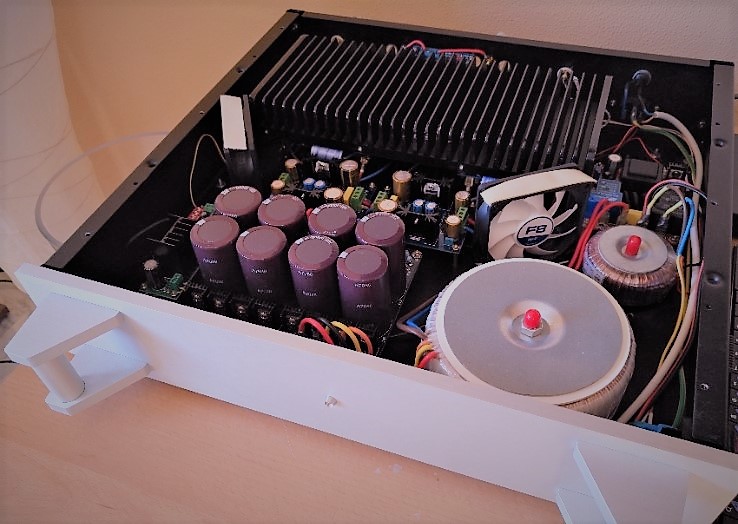
Considering that the audio amplifications with the power stages stabilized, none of my sympathies for a sound "closed" and devoid of great breath and seduction has ever gone, but after two months of testing and experimentation on my clone NAP-140 improvements in terms of thickness timbre, harmonic richness, instrumental realism (this fundamental note seems much richer in harmonics) combined with a delicate detail, are so concrete and objective that I excluded any possible suggestion by experimenting with more than a pair of speakers, passing from my magnetoplanar MAGNEPAN, to a pair of bookshelf SONUS FABER up to a pair of vintage New Loudspeaker ADVENT.
I would like to point out that the installation of the +30/-30 Vdc stabilized power supply stage concerned only the differential input stage and the VAS section.
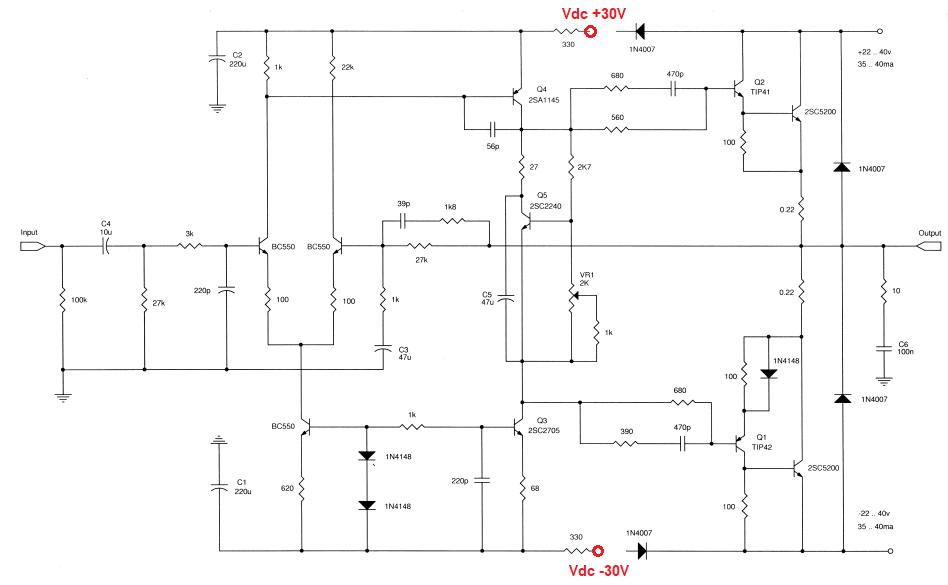
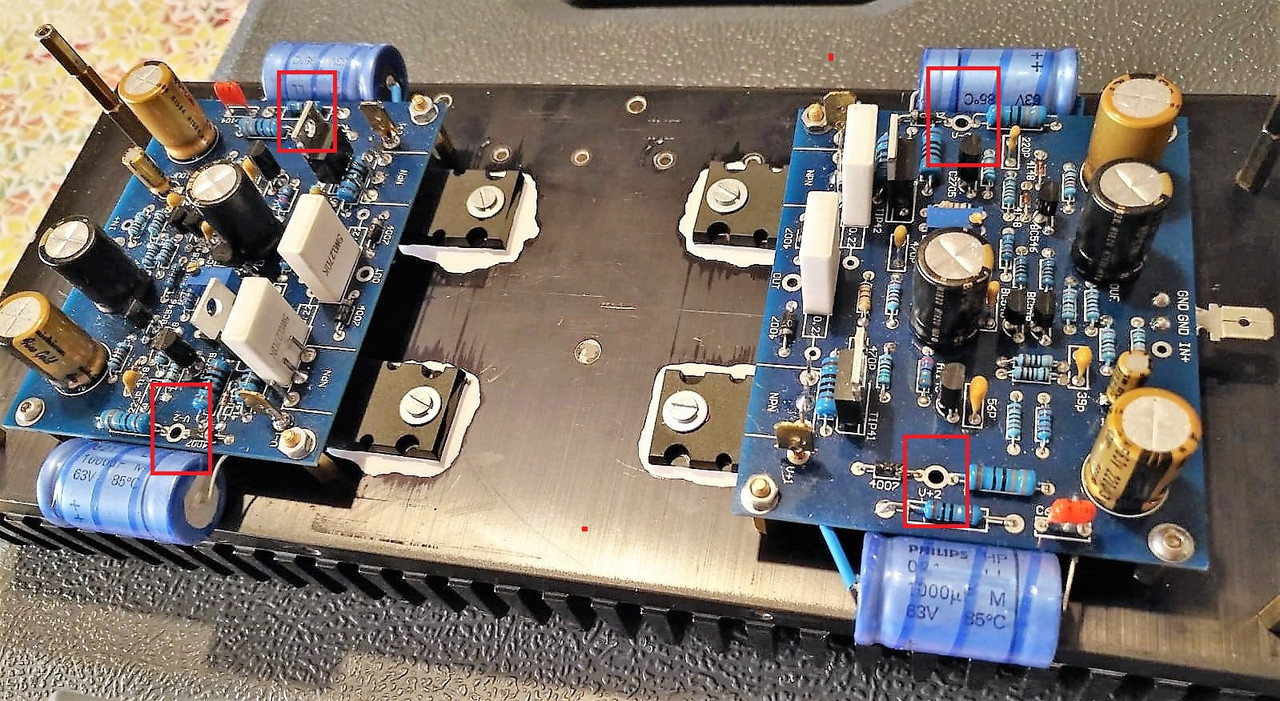
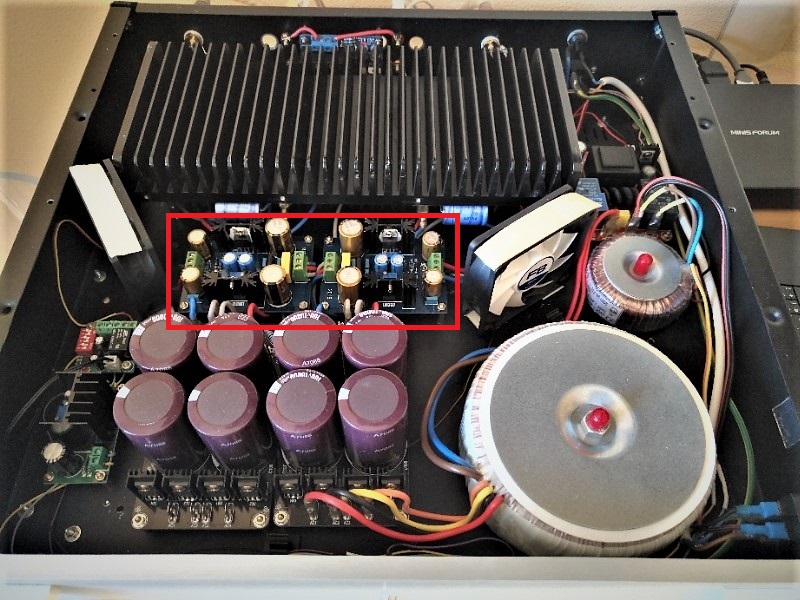
The linear power supply (+42/42 Vdc) of the pilot stage and the power BJTs, was instead left strictly unchanged.
A change that therefore I would strongly suggest
 to all and easily integrated through the installation of two adjustable stabilized power supply kits based on LM317/337 at a cost of a few euros on eBay, spending another 20 to replace the trivial electrolytic kits, with the refined and beautifully sounding NICHICON Muse.
to all and easily integrated through the installation of two adjustable stabilized power supply kits based on LM317/337 at a cost of a few euros on eBay, spending another 20 to replace the trivial electrolytic kits, with the refined and beautifully sounding NICHICON Muse.


Considering that the audio amplifications with the power stages stabilized, none of my sympathies for a sound "closed" and devoid of great breath and seduction has ever gone, but after two months of testing and experimentation on my clone NAP-140 improvements in terms of thickness timbre, harmonic richness, instrumental realism (this fundamental note seems much richer in harmonics) combined with a delicate detail, are so concrete and objective that I excluded any possible suggestion by experimenting with more than a pair of speakers, passing from my magnetoplanar MAGNEPAN, to a pair of bookshelf SONUS FABER up to a pair of vintage New Loudspeaker ADVENT.
I would like to point out that the installation of the +30/-30 Vdc stabilized power supply stage concerned only the differential input stage and the VAS section.



The linear power supply (+42/42 Vdc) of the pilot stage and the power BJTs, was instead left strictly unchanged.
A change that therefore I would strongly suggest

 to all and easily integrated through the installation of two adjustable stabilized power supply kits based on LM317/337 at a cost of a few euros on eBay, spending another 20 to replace the trivial electrolytic kits, with the refined and beautifully sounding NICHICON Muse.
to all and easily integrated through the installation of two adjustable stabilized power supply kits based on LM317/337 at a cost of a few euros on eBay, spending another 20 to replace the trivial electrolytic kits, with the refined and beautifully sounding NICHICON Muse.
Last edited:
In addition and after experimenting in the driver stage (Q1 and Q2) with the complementary transistors shown in the original scheme, TIP41/42 (Current Gain Bandwidth = 3.0 MHz), I reassembled a pair of complementary MJE15030/15031 (Current Gain Bandwidth = 30.0 MHz).

The TIP41/42 pair was characterized by a particularly sculpted and defined bass, while the MJE15030/15031 pair gave back that extraordinary magic made of extraordinary realism on the mid and mid-high delicate and magnificently chiseled that I personally consider much more refined and appropriate characteristics to the extraordinary sound
 of this exceptional circuit design, not lacking in any way, however a fast, articulated and extended bass register.
of this exceptional circuit design, not lacking in any way, however a fast, articulated and extended bass register.

The TIP41/42 pair was characterized by a particularly sculpted and defined bass, while the MJE15030/15031 pair gave back that extraordinary magic made of extraordinary realism on the mid and mid-high delicate and magnificently chiseled that I personally consider much more refined and appropriate characteristics to the extraordinary sound

 of this exceptional circuit design, not lacking in any way, however a fast, articulated and extended bass register.
of this exceptional circuit design, not lacking in any way, however a fast, articulated and extended bass register.Esteemed Jeff,
the MJE243/253 is a pair of transistors that I took into consideration and I experimented six/seven years ago in the first two versions of this amp that I made over the years.
And indeed they do sound very good.
But over the years, having wanted to use the NAP-140 clone, also to drive my beloved MAGNEPAN isodynamic loudspeakers, really thirsty for Power and Current, I brought the power delivered by this amp to the safety and linearity limits of the SOA-Safe Operation Area of the pair of TOSHIBA 2SC5200, completely resizing the power stage based on four double fast rectification diodes, a dual voltage of +42/-42 Vdc and a maximum current of 6 Amps in static mode for each single stereo channel.
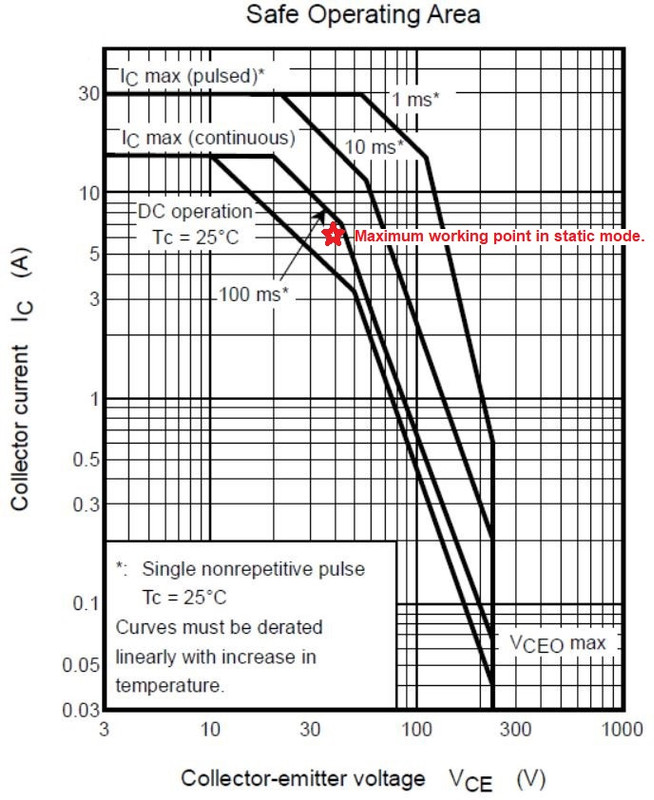
In this situation, however, the pair of MJE243/253 drivers (which theoretically were still good) showed some limits of dissipation and driving of the power amps in dynamic mode and I had to replace them with a pair of TIP41/42 very generous in terms of bass but far from the refined musical nuance of the MJE243/253.
The solution to the problem, therefore, was to mount the pair of MJE15030/15031 drivers, and I can assure you that they perfectly manage not to make the MJE243/253 regret.
the MJE243/253 is a pair of transistors that I took into consideration and I experimented six/seven years ago in the first two versions of this amp that I made over the years.
And indeed they do sound very good.
But over the years, having wanted to use the NAP-140 clone, also to drive my beloved MAGNEPAN isodynamic loudspeakers, really thirsty for Power and Current, I brought the power delivered by this amp to the safety and linearity limits of the SOA-Safe Operation Area of the pair of TOSHIBA 2SC5200, completely resizing the power stage based on four double fast rectification diodes, a dual voltage of +42/-42 Vdc and a maximum current of 6 Amps in static mode for each single stereo channel.

In this situation, however, the pair of MJE243/253 drivers (which theoretically were still good) showed some limits of dissipation and driving of the power amps in dynamic mode and I had to replace them with a pair of TIP41/42 very generous in terms of bass but far from the refined musical nuance of the MJE243/253.
The solution to the problem, therefore, was to mount the pair of MJE15030/15031 drivers, and I can assure you that they perfectly manage not to make the MJE243/253 regret.
- Home
- Amplifiers
- Solid State
- NAP-140 Clone Amp Kit on eBay
 Billyfish, the drag and drop for images doesn't work properly. Please click on Go Advanced and use the upload facility to attach your image. I've edited your previous post to get rid of the bad image as it was causing the thread to stall.
Billyfish, the drag and drop for images doesn't work properly. Please click on Go Advanced and use the upload facility to attach your image. I've edited your previous post to get rid of the bad image as it was causing the thread to stall.